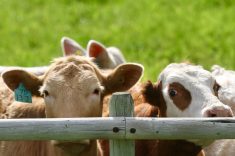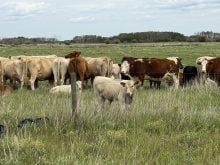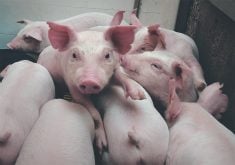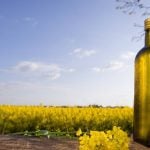RED DEER – Alberta has implemented a voluntary Johne’s disease control
program.
This progressive and debilitating bacterial disease has been diagnosed
in cattle, deer, bison, sheep and goats.
Last fall livestock producer groups joined Alberta Agriculture, the
Canadian Food Inspection Agency and veterinarians to start a control
program that includes research, education, herd testing and herd
accreditation for disease free status.
“The main objective of the research is to find the prevalence of
Read Also
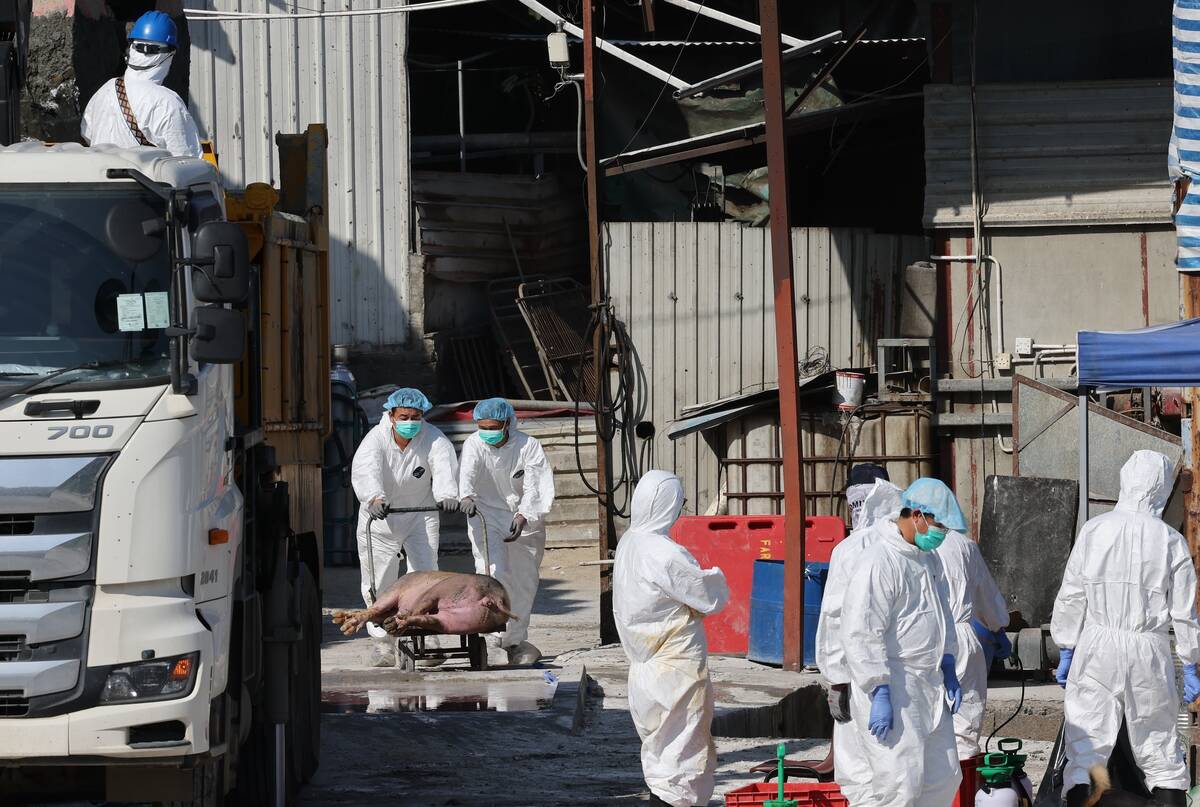
Mixed results on new African swine fever vaccine
The new African swine fever vaccine still has issues, but also gave researchers insight into how virus strain impacts protection against the deadly pig disease.
Johne’s disease in Alberta,” said Chunu Mainali, a disease surveillance
veterinarian with Alberta Agriculture who is working on the control
program.
More than 100 private veterinarians have been accredited to handle
testing and education for producers.
Mainali explained the program during a session at the Western Canadian
Dairy seminar held in Red Deer.
Participating producers start the program with a random sample of 30
animals. They are tested either with the ELISA test – a blood test for
antibodies – or through a fecal sample.
Unfortunately both tests have a sensitivity level under 50 percent,
meaning positive cases might be missed.
“That is the flaw of the Johne’s disease test,” Mainali said.
Over time participating producers achieve four successive levels of
Johnes free status. Eight cattle herds have achieved Level 1. Five are
beef herds and three are dairy, said Mainali.
The first level requires 30 randomly selected blood samples from cattle
in their second lactation or beyond. All must test negative on ELISA or
be confirmed negative by fecal culture at an Alberta Agriculture lab.
To achieve Level 2, producers wait a minimum of six months for the next
set of tests. They must submit strategically pooled fecal samples on
all second lactation or older cows for culture. All pools must be
confirmed negative.
The third level requires a one-year delay and a repeat of the strategic
cultures as for Level 2.
Level 4 is achieved when herd owners can maintain any level with annual
ELISA testing of 30 randomly selected second-lactation cows. All must
test negative on ELISA or the culture.
Producers who have not had a positive animal are advised to buy only
animals from other equivalent herds to maintain their status.
The program does not certify freedom from Johne’s disease but should
lower the risk of infection. During the testing periods it is
recommended producers maintain a closed herd.
There is no treatment for Johne’s disease, which appears to be
transmitted through inhalation. An animal may become infected as a
youngster but clinical signs do not appear until adulthood.
The disease causes diarrhea and emaciation. Animals are often culled
during their productive years because they are poor producers, less
fertile and may experience lower milk production. Their weakened
condition makes them susceptible to other diseases like mastitis.
In 1998, Alberta tested 226 cow-calf herds. Fecal samples were
collected and cultured showing 11 of the 678 individuals tested were
positive for the disease. When the numbers are extrapolated to the
provincial herd, researchers estimated just under five percent of
Alberta herds may have Johne’s disease.






